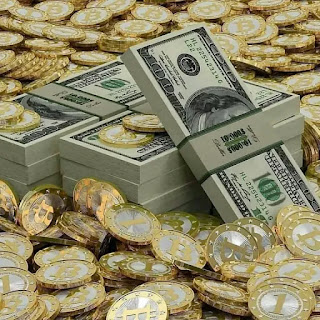counterfeit money for sale | Bills N Bills
counterfeit bills
The painstakingly camouflaged lines covering the front and back of the new $20 notes.
As might be irrefutable, the scanner gets all of this demandingly — looking at a $20 greenback is no issue.
Sort out in the going with portion why truly printing the bill is, coincidentally, an issue.
There's a stunning loss of detail while using a horrible quality printer.
Right when you attempt to print your checked $20 greenback, you track down the issue. The way that the scanner can catch such detail doesn't prescribe that your printer is ready to copy it. In case you make a pass at drawing on a standard inkjet printer, it comes out looking totally deceived to the free eye. The tones are off and the photos look jumbled.
You can see the safeguard for why it looks misled when you put your new phony bill under an improving instrument. For example, many fine nuances are completely lost:
Furthermore, the light-hued hexagons go to a truly stunning shade considering the way that the printer can't copy lines that are adequately fine or pleasingly light:
A horrible quality printer encounters bother printing barely anything, carefully concealed nuances.
Counterbalance these two pictures with their looking at pictures from the past region.
Obviously they are off kilter the etching. You can really see what's happening here — the printer can't duplicate the inadequate contrasts unequivocally. Because of the hexagons, the bigger part that the printer ends up making make the light shade of the central charge by and large more fabulous shade. This effect is the very assurance behind scratching the softly covered hexagons on the bill regardless — they make the bill harder to reflect with current printer progress.
Fairly, these printer issues can be restored with a dominating printer. Regardless, even the best printers lose a piece of the detail. Expecting that an individual were to look at the inkjet printer's phony bill with a redesigning glass, it would be certain that it is a phony. Regardless, to the free eye, a decent enormous standard printer can pass a phony bill that looks exceptionally close on to the real deal.
To make an ensured charge, you should test-print your result different times and change the gathering to get the general tone right. You are moreover should yield the back of the bill and work on changing the front and posteriors to get a plausible two-sided bill.
Expecting you are wary about your structure and enduring you have a palatable printer, you will end up with a bill that, but harmed, looks adequately great to the free eye. It won't have the assortment shift ink and it will look a piece messy in places, yet as long as the recipient doesn't look at these nuances eagerly, the double dealing will be "good" to work.
The most direct framework for getting around the visual imperfections of your phony bills is to spend the bills in conditions where the particular visual nuances are challenging to see. For example, you could attempt to hand your fake money to a waitperson in a jumbled bar or dance club.
Precisely when the specific contacts the phony money, in any case, it will be certain that something is off course. That is a speedy result of the paper.
$1 Million Bill
In 2004, a woman endeavored to purchase things at her close by Wal-Mart using a $1 million bill. Clearly the U.S. Safe doesn't make a $1 million bill, so the captivating money was quickly seen. Purportedly, Alice Pike endeavored to purchase more than $1,600 worth of thing using the phony bill. Perhaps she was wanting to visit Target and K-Mart next; Ms. Pike was seen as having two other $1 million notes .
People handle what money feels like. People who handle cash persistently, like bank representatives, accomplices and server group, can feel a phony bill in brief time if the paper is off course.
That "energy of money" approaches three explicit things that make the paper in paper bills novel:
Commonplace paper that you use on a standard clarification (paper, scratch cushion paper, paper in books, etc) is conveyed utilizing the cellulose found in trees. Paper used for cash, clearly, is conveyed utilizing cotton and material fibers. This kind of paper is known as material paper. One colossal advantage of using material paper is the way that it doesn't cripple expecting you unexpectedly run paper cash through a garments washer.
The paper used for cash is thin gone from ordinary paper.
The paper used for cash is squashed with unfathomable many pounds of strain during the printing structure. This makes it basically more flimsy and gives really made charges a captivating newness.
The other remarkable thing about the surface paper used in affirmed cash is that there are immaterial blue and red strands mixed into the paper when it is made. These strands are easy to find in true money, yet they are fine to the point that they don't copy very well in the phony money from your inkjet printer.
The last thing a falsifier stays mindful of that ought to do is print counterfeit money on "ordinary" printer paper. It will feel totally deceived, and it will in general be seen with a phony pen. These splendid pens, which an enormous piece of the time look something like a highlighter, contain iodine that changes tone when it cooperates with cellulose. In any case, you really need to endeavor to find shaky material paper to print on. You can find this kind of paper all that considered office supply stores.
Eventually, the paper really may not feel right. That is the explanation a few falsifiers beat everybody's assumptions to get the best paper. A conclusive phony bill would use an identical paper used by the public power. This paper, before long, is essentially hard to buy.


.jpg)
Comments
Post a Comment